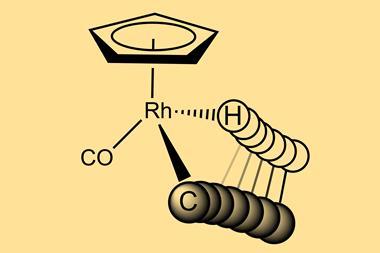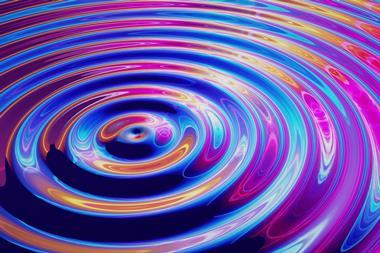Similarly charged particles have been found to sometimes attract, rather than repel each other – something that contradicts textbook expectations and has important implications for chemistry and biology.1 The new results help to solve a puzzle that has bemused scientists for the best part of a century.
‘We are taught in high school that like charges repel and this oft repeated lesson is accepted as fact,’ says Seth Fraden at Brandeis University in the US, who wasn’t involved in the study. ‘But stretching over a period of decades, there have been a few rare observations of the opposite in which water-borne colloids with the same negative charge attract.’ Irving Langmuir, who won the 1932 chemistry Nobel prize for his surface chemistry research, is credited with one of the first observations of this phenomenon in 1938.
‘We’ve sort of discovered new rules of the game,’ notes Madhavi Krishnan from the University of Oxford who led the study. ‘We found that the fluid phase has completely different rules, or rules that can be radically different under certain conditions.’ The team observed that pairs of negatively charged silica microparticles suspended in water attracted each other to form hexagonally arranged clusters, whereas pairs of positively charged aminated silica particles repelled – a rare behaviour that had been reported for other systems before but wasn’t understood.
‘I made one of the earlier observations of this effect,2 but couldn’t reconcile experiments with theory and only published the observation after many years of doing experiments to rule out every possible artefact I could think of,’ comments Fraden. ‘Before this work by Krishnan and colleagues, the few experiments that reported like-charge attraction were viewed by most of the scientific community with suspicion and even a modicum of derision.’ Krishnan mentions that the attraction can extend over long distances too. ‘We see evidence for very long-range forces, of the order of five to 10 Debye lengths, but there may be reasons to expect this length scale to be even longer.’
Over several years, Krishnan doggedly sought a theoretical explanation for this behaviour. ‘After developing an intriguing theory a few years ago,3 she now presents a multitude of experiments that convincingly demonstrate how and why like-charged colloids attract,’ says Fraden. The process involves the thin layer of solvent at the interface of the colloids. For negatively charged particles in water, there’s a subtle rearrangement of the interfacial solvent molecules that lowers the free energy enough to outweigh electrostatic repulsion at large separations. This effect is pH-dependent, so the formation of clusters can be favoured or inhibited by varying the pH.
To prove their concept, the researchers also carried out studies in alcohols, which orient differently at the particle surfaces. ‘The water molecule orients with its oxygen atom towards the surface while alcohols orient with the oxygen atom towards the bulk,’ notes Krishnan. ‘That’s an inversion of the dipole and in such a situation, our theory predicts that positives should attract because when the dipole flips, the sign asymmetry should flip too and that’s exactly what we found!’
The experimental setup is quite simple, adds Krishnan. ‘It’s about as simple as one can get in a physical chemistry lab. You essentially take colloidal particles in solution, squirt them onto a microscope coverslip and watch.’ Besides bright-field microscopy, the team carried out computer simulations to confirm their results.
Fraden says that the implications of this discovery are extensive and have consequences for many important interfacial phenomena such as liquid–liquid phase separation, protein assembly, DNA packaging and colloidal stability. ‘I warned Krishnan a decade ago that pursuing the origin of like-charged attraction was a quixotic venture. Fortunately for the scientific community, she ignored my advice.’
References
1 S Wang et al, Nat. Nanotechnol., 2024, DOI: 10.1038/s41565-024-01621-5
2 GM Kepler and S Fraden, Phys. Rev. Lett., 1994, 73, 356 (DOI: 10.1103/PhysRevLett.73.356)
3 A Kubincová, PH Hünenberger and M Krishnan, J. Chem. Phys., 2020, 152, 104713 (DOI: 10.1063/1.5141346)




![An image showing cyclo[18]carbon](https://d2cbg94ubxgsnp.cloudfront.net/Pictures/380x253/2/7/3/502273_indexuntitled1_212753.png)







No comments yet